instead of a macro I wrote a category for this. It handles RGB(A) value strings with the formats @"#17BAFA(FF)", @"#ABC(F)", @"17BAFA", @"0xABC",…
As it uses message sending, rather than a macro call, it feels more natural in the context of Objective-C.
Use it like UIColor *color = [UIColor colorFromHexString:@"#DCDFE3"];
afterwards you can check if(!color) { // must be an invalid format
@implementation UIColor (Creation)
+(UIColor *)_colorFromHex:(NSUInteger)hexInt
{
int r,g,b,a;
r = (hexInt >> 030) & 0xFF;
g = (hexInt >> 020) & 0xFF;
b = (hexInt >> 010) & 0xFF;
a = hexInt & 0xFF;
return [UIColor colorWithRed:r / 255.0f
green:g / 255.0f
blue:b / 255.0f
alpha:a / 255.0f];
}
+(UIColor *)colorFromHexString:(NSString *)hexString
{
hexString = [hexString stringByTrimmingCharactersInSet:[NSCharacterSet whitespaceCharacterSet]];
if ([hexString hasPrefix:@"#"])
hexString = [hexString substringFromIndex:1];
else if([hexString hasPrefix:@"0x"])
hexString = [hexString substringFromIndex:2];
int l = [hexString length];
if ((l!=3) && (l!=4) && (l!=6) && (l!=8))
return nil;
if ([hexString length] > 2 && [hexString length]< 5) {
NSMutableString *newHexString = [[NSMutableString alloc] initWithCapacity:[hexString length]*2];
[hexString enumerateSubstringsInRange:NSMakeRange(0, [hexString length])
options:NSStringEnumerationByComposedCharacterSequences
usingBlock:^(NSString *substring,
NSRange substringRange,
NSRange enclosingRange,
BOOL *stop)
{
[newHexString appendFormat:@"%@%@", substring, substring];
}];
hexString = newHexString;
}
if ([hexString length] == 6)
hexString = [hexString stringByAppendingString:@"ff"];
NSScanner *scanner = [NSScanner scannerWithString:hexString];
unsigned hexNum;
if (![scanner scanHexInt:&hexNum])
return nil;
return [self _colorFromHex:hexNum];
}
@end
When I pick the keyboards background color with Photoshop, the value is "0xD9DCE0", not "0xDCDFE3".
